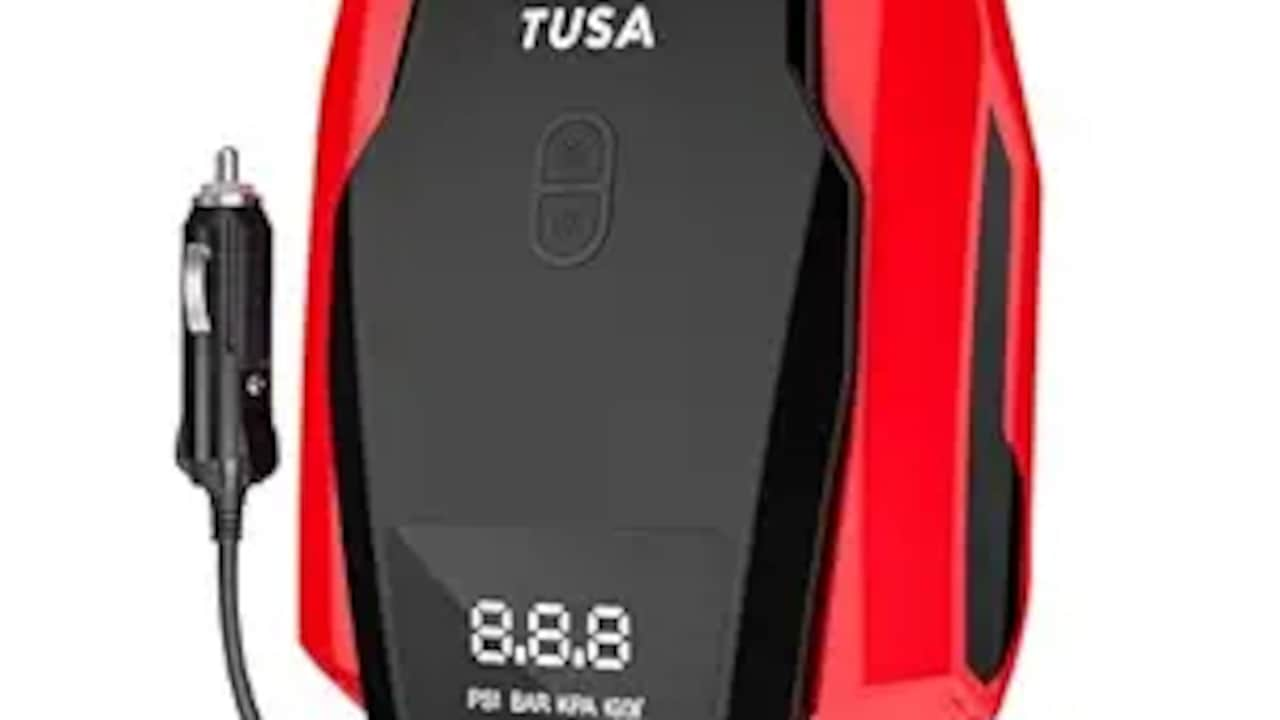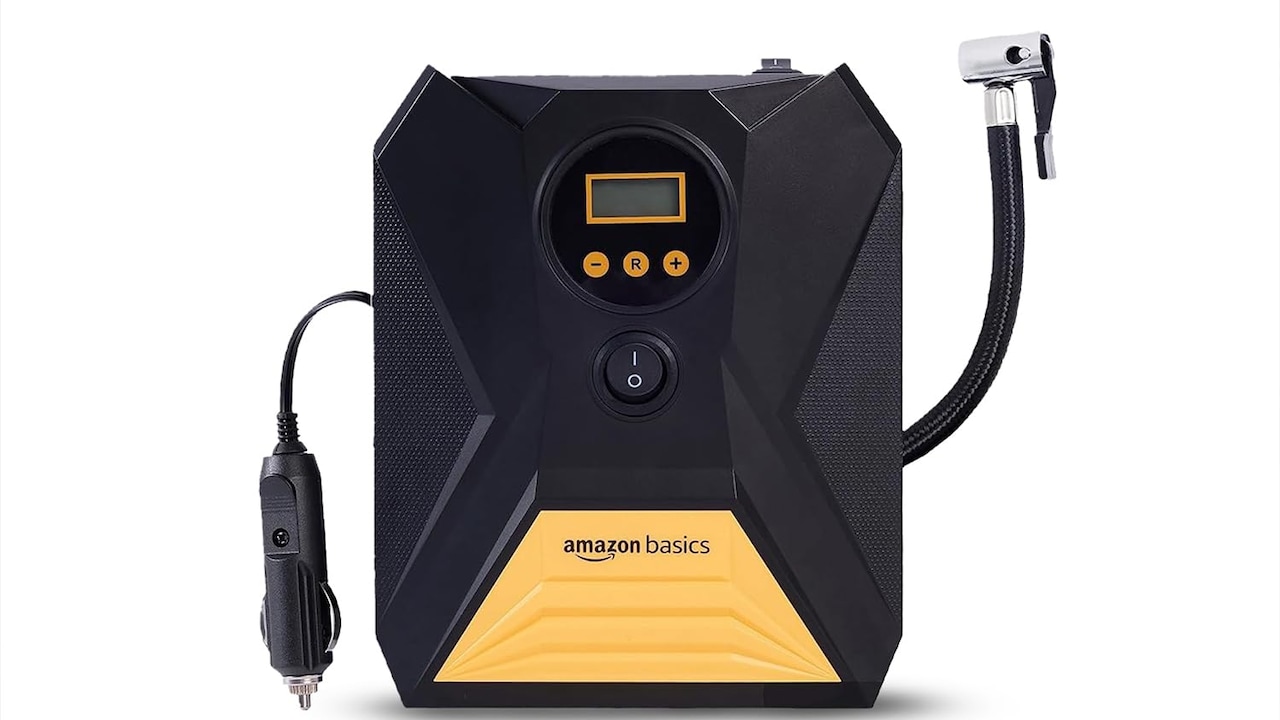How To Use A Portable Tyre Inflator Safely On Road Trips
A sudden flat tyre can turn a dreamy road trip into a dusty roadside wait. A portable tyre inflator can save the day, but using it correctly is just as important as owning one. If youre on a road trip, just plug in your portable tyre inflator, check the pressure, and top up those tires - it is easy and stress-free if done right.

Top 10 Essential Tips For Using A Portable Car Tyre Inflator On The Highway.
There's something magical about packing the car, playing your favourite playlist, and heading out for a road trip. Whether it's the winding roads of the Western Ghats, the desert highways of Rajasthan, or the breezy coastal stretches of Tamil Nadu, the journey itself feels like a story waiting to unfold. But as every seasoned traveller knows, adventures come with their share of surprises, like a tyre losing air miles away from the nearest puncture shop.
This is where a portable tyre inflator becomes a true friend in need. Small enough to fit in the boot, yet powerful enough to get you rolling again, it saves time, money, and nerves. Still, many people hesitate to use one, worried they might mess it up. The truth is, it's simple, safe, and immensely useful, provided you know a few basics.
Let's walk through 10 practical, road-tested tips on how to use a portable tyre inflator safely, keeping your trip smooth and your spirit high. This is a guide on how to make the most of this handy tool.

Here's how to safely use a portable tyre inflator during road trips: Follow the instructions, inflate carefully, and monitor pressure throughout the process; Photo Credit: Amazon
Essential Tips for Using a Portable Tyre Inflator On Road Trips
1. Choose the Right Inflator for Your Car
Not all inflators are born equal. Some are designed for bicycles, others for SUVs, and a few can even pump up a football. The key is knowing what works best for your vehicle. A small hatchback may need a compact inflator, while an SUV demands a sturdier one with higher pressure capacity. Always check the maximum PSI rating, your car's tyre manual will mention the recommended PSI.
Picture this: you've invested ₹3,000 in a tiny inflator meant for two-wheelers, only to realise on the highway to Goa that it wheezes like a harmonium trying to fill your car's tyre. Avoid such comic tragedy by picking a model suited to your wheels. Spending a bit more upfront ensures reliability when you need it most.
2. Keep It Accessible and Charged
An inflator tossed deep under luggage bags is about as useful as an umbrella left at home on a rainy day. Place it somewhere within easy reach, like under the seat or on the side pocket of the boot. Many modern inflators run on car power via a 12V socket, but others are battery-powered. If yours is rechargeable, remember to top it up before the journey.
Imagine being stranded on a dusty road in Madhya Pradesh, only to discover the inflator is dead. That's the kind of oversight that tests patience and vocabulary. A simple habit of checking its charge before every long drive makes a world of difference.
3. Know Your Tyre Pressure Requirements
Every vehicle comes with its own sweet spot for tyre pressure, usually written on a sticker inside the driver's door or in the manual. For most cars, it ranges between 30–35 PSI, but the exact figure matters. Over-inflating makes tyres hard and bumpy, while under-inflating eats into fuel efficiency and tyre life.
A friend once bragged about “extra air for extra mileage.” That theory ended with a burst tyre on a hot summer afternoon. Lesson learnt: stick to the numbers. Treat the PSI rating like the doctor's prescription for your tyres, ignore it at your peril.
4. Park Safely Before Inflating
It might seem obvious, but inflating on the side of a busy highway is risky. Always move the car to a safe spot, switch on hazard lights, and if possible, place a reflective triangle behind the vehicle. Safety first, always.
Consider this: a dimly lit bypass, trucks roaring past, and you crouched by the tyre with your inflator. Not the safest image, right? Even if it delays you by five minutes, finding a safer shoulder or lay-by is worth the effort. A road trip is about memories, not mishaps.
5. Attach the Nozzle Firmly
Portable inflators come with nozzles that need to be clipped tightly onto the tyre valve. A loose connection leads to air leakage and frustration. You may hear a faint hiss if it's not secure, and the PSI reading won't rise properly.
The trick is simple: press the nozzle firmly, lock it in place, and then start the machine. The satisfaction of seeing the pressure rise steadily is oddly reassuring. Think of it like fastening a seatbelt, click, and you're good to go.
6. Inflate in Short Bursts
Tyres heat up when inflated continuously, and so does the inflator. The best practice is to inflate in short intervals of 30–40 seconds, giving both machine and tyre a quick breather. It's kinder to the equipment and ensures accurate readings.
There's also something oddly meditative about it. Pause, let the machine rest, glance around at the scenery, maybe the sun setting behind the hills, and then continue. Road trips are about slowing down, after all. Even inflating a tyre can add to the rhythm of the journey.
Also Read: 5 Best 12V Car Tyre Inflators Under ₹3,000: Tested Picks For Daily Use
7. Keep A Tyre Pressure Gauge Handy
Although most inflators have built-in gauges, they're not always perfectly accurate. A small, separate tyre pressure gauge, costing around ₹300–₹400, can be a great backup. Check the pressure after inflating to confirm it's within the safe range.
Consider it like double-checking a restaurant bill, you don't want to be over or under, especially on something that affects safety. It's a small step that brings peace of mind, particularly when driving long distances with family.
8. Don't Overinflate, Stay Calm and Steady
The temptation to add “just a little more air” is real. But overinflating is dangerous. Tyres become stiff, reducing grip and increasing chances of skidding, especially on wet roads. Stop inflating as soon as the gauge shows the correct PSI.
There's no medal for the “most inflated tyre” on the highway. Instead, picture the confidence of cruising smoothly, knowing the tyres are perfectly balanced. Moderation works, on the road and in life.
9. Regularly Test the Inflator At Home
A portable tyre inflator is not a magic wand, it needs practice. Trying it out for the first time on a lonely highway isn't ideal. Before setting off, test it at home. Plug it in, attach it, and run it on a spare tyre. This way, you get familiar with the sounds, buttons, and quirks of the machine.
It's like rehearsing before a stage performance. Confidence comes from familiarity. Once you've practised at home, using it on the road feels effortless. Plus, you'll know instantly if the inflator is faulty before you actually need it.
10. Pair It with a Tyre Repair Kit
Sometimes, a tyre doesn't just lose air, it gets punctured. An inflator alone won't help if air keeps escaping. That's where a basic puncture repair kit comes in handy. Together, they form the ultimate roadside rescue team.
Picture this: driving through the Aravalli hills, a sharp stone slices the tyre. Instead of waiting two hours for roadside assistance, you patch it up, inflate, and continue the journey, saving both time and money. A repair kit costs under ₹500, yet the peace of mind it provides is priceless.

How To Use A Portable Tyre Inflator Safely On Road Trips; Photo Credit: Amazon
Products Related To This Article
1. TUSA Cordless Tyre Inflator - 6000 mAh Battery - 2X Faster Inflation
2. AGARO Galaxy Cordless Tyre inflator
3. Portronics Vayu 4.0 Tyre Inflator with 2-in-1 Rechargeable
4. GoMechanic Digital Tyre Inflator for Car
5. Qubo Digital Tyre Pressure Inflator by Hero Group
Road trips are about freedom, the joy of hitting the open road, windows down, and spirits up. But freedom is best enjoyed with a little preparation. A portable tyre inflator is one of those humble tools that often goes unnoticed until the very moment it becomes a hero.
Using it safely isn't complicated, but it does call for a touch of awareness: choosing the right model, knowing the correct tyre pressure, parking carefully, inflating steadily, and double-checking results. Each of these steps adds a layer of safety and confidence to your journey.
So next time the wanderlust bug bites and the road beckons, pack your playlist, snacks, and yes, your trusty portable tyre inflator. It might just be the difference between an unplanned halt under the hot sun and a smooth ride to the next beautiful view. Shop now on Amazon.
Disclaimer: The images used in this article are for illustration purpose only. They may not be an exact representation of the products, categories and brands listed in this article.























